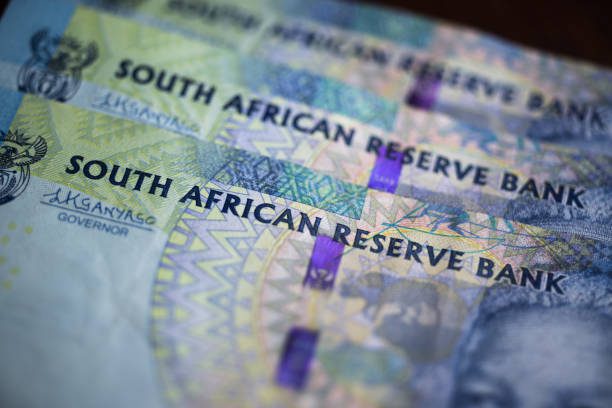The South African rand faces the possibility of a significant depreciation, potentially reaching as high as R21.40 against the US dollar in a pessimistic scenario for 2024, as outlined by financial analysts at Investec. This stark forecast is part of what the institution describes as a “severe down-case scenario.”
Economic Pressures and Currency Fluctuations
Annabel Bishop, Investec’s chief economist, highlights multiple factors contributing to the pressure on the rand. A primary concern is the robustness of the US economy, which continues to demonstrate resilience through positive indicators such as US retail sales and housing data.
Bishop said, “The rand will be affected by a strong US economy as positive data on US retail sales and housing illustrated a resilient US economy.”
Further complicating matters for the rand is the anticipated policy adjustment by the US Federal Reserve. Bishop elaborates on potential repercussions for the South African currency:
She said the rand may be weakened by the fact that the US may cut their interest rate soon and this is coupled with the fact that global inflation is on the rise, according to the International Monetary Fund (IMF).
Investec’s severe scenario suggests that the rand could average around R20.49 against the dollar throughout the year, peaking at R21.40 in the final quarter of 2024. This scenario assumes a prolonged global recession marked by high inflation and adverse weather conditions, which are expected to undermine the rand’s value.
Conversely, Investec’s more moderate “base case” scenario forecasts the rand to stabilize around R18.20 against the dollar by mid-2024, with an annual average slightly lower at R18.17.
Current Trading and Other Economic Predictions
On the trading front, the rand showed a slight weakening as per recent data from Anchor Capital. On a specific day, the rand closed at R19.17 against the dollar and opened the following morning at R19.24. Furthermore, the rand was noted at R20.48 against the euro and R23.73 against the British pound at 9 am the following day.
In a related economic forecast, First National Bank (FNB) issued a warning last week about South Africa’s potential slide into a technical recession. This outcome could materialize if the South African Reserve Bank (SARB) maintains higher-than-necessary interest rates.
“Prolonging rate cuts beyond necessity, particularly when broader financial conditions are already restrictive, could further stifle growth and heighten the likelihood of a technical recession,” FNB stated.
The implications of continued high interest rates are already visible, with a significant increase in household debt servicing costs, which surged from an annualised nominal R312 billion in late 2019 to R411 billion by the end of 2023, according to FNB.
As these economic scenarios unfold, the rand’s trajectory will likely be influenced by both domestic policies and broader global economic conditions. This ongoing situation demands close monitoring by stakeholders to navigate the potential challenges ahead.

















